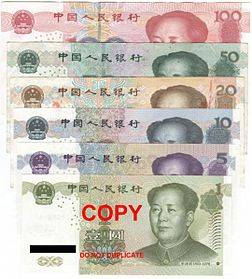Asset Management
China Sets Hottest ETF Growth Pace

Total ETF AuM across Asia ex-Japan fell by 0.8 per cent in the first five months of the year, amid volatile market conditions triggered by the coronavirus pandemic. Last year, the region’s AuM increased by 48.9 per cent, led by Taiwan, India, and China.
China’s exchange-traded fund assets under management, excluding those of money market ETFs, surged by 14.7 per cent to $93.6 billion in the January to May 2020 period, suggesting that demand for these “passive” investments is strong even amidst a global pandemic.
The growth rate was the fastest among Asia ex-Japan markets, and due to continued demand for passive investments, according to Cerulli Associates, a Boston-based analytics and research firm.
ETFs in China logged AuM growth – from a relatively low base – of 49.7 per cent to $81.6 billion, the report said.
Cerulli said growth could be further boosted by the investment advisory pilot scheme in China launched in October 2019, exploiting their perceived low-cost advantages.
Total ETF AuM across Asia ex-Japan fell by 0.8 per cent in the first five months of the year, amid volatile market conditions triggered by the coronavirus pandemic. Last year, the region’s AuM increased by 48.9 per cent, led by Taiwan, India, and China.
Taiwan’s 130.6 per cent surge in ETF assets in 2019 was mainly attributed to insurance companies seeking to beef up their overseas allocations through ETFs. However, this trend is likely to slow down in the near term, following the move to limit the frequency of bond ETF launches in September 2019 and the high volatility in the US credit market in March 2020. Over the first five months of the year, Taiwan’s AuM slipped by 0.2 per cent to $54.5 billion.
India’s 2019 growth, at 63.9 per cent, was driven mainly by the Employees’ Provident Fund Organisation. There is limited appetite among retail investors in India, except among some high net worth investors. Despite this, the implementation of the trailer fee-based model last year and the improving use of digital channels has provided an impetus for the industry to consider low-cost products.
South Korea also showed robust growth in 2019, with AuM up by 26.1 per cent year-on-year, despite the slowdown in net inflows to KRW6.5 trillion ($5.6 billion), the first since 2014. ETFs in Korea remain as strong competitors to mutual funds. While local ETFs remain popular, foreign-domiciled ETFs have seen growing interest from Korean investors due to favourable tax treatment and their hopes for better returns.
Cerulli said that compared with other parts of the region, most ETF markets in Southeast Asia ex-Singapore, including Indonesia, Thailand, and Malaysia, face liquidity issues due to thin volume.
Investors need a brokerage account to invest in ETFs, but mutual fund investors in the region generally do not have one, as they are used to buying investment products from banks or agents. Within Southeast Asia ex-Singapore, Vietnam appears to have the highest retail interest in exchange-traded products. Cerulli said that managers have said that these funds will continue to be a huge trend in the country.
“The ETF market in Asia ex-Japan is waiting to be tapped and will continue to complement active funds,” Ken Yap, managing director, Asia, with Cerulli Associates, said. “Although retail usage of ETFs continues to be limited in many markets, new product launches, regulatory initiatives, increasing pressure to deliver alpha amid fee pressures, and growing acceptance of online platforms could boost this segment.”